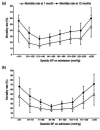Integrative cerebral blood flow regulation in ischemic stroke
- PMID: 34259070
- PMCID: PMC8985438
- DOI: 10.1177/0271678X211032029
Integrative cerebral blood flow regulation in ischemic stroke
Abstract
Optimizing cerebral perfusion is key to rescuing salvageable ischemic brain tissue. Despite being an important determinant of cerebral perfusion, there are no effective guidelines for blood pressure (BP) management in acute stroke. The control of cerebral blood flow (CBF) involves a myriad of complex pathways which are largely unaccounted for in stroke management. Due to its unique anatomy and physiology, the cerebrovascular circulation is often treated as a stand-alone system rather than an integral component of the cardiovascular system. In order to optimize the strategies for BP management in acute ischemic stroke, a critical reappraisal of the mechanisms involved in CBF control is needed. In this review, we highlight the important role of collateral circulation and re-examine the pathophysiology of CBF control, namely the determinants of cerebral perfusion pressure gradient and resistance, in the context of stroke. Finally, we summarize the state of our knowledge regarding cardiovascular and cerebrovascular interaction and explore some potential avenues for future research in ischemic stroke.
Keywords: Ischemic stroke; cerebral blood flow; neurovascular physiology.
Conflict of interest statement
Figures





References
-
- Wallace JD, Levy LL. Blood pressure after stroke. J Am Med Assoc 1981; 246: 2177–2180. - PubMed
-
- Britton M, Carlsson A, de Faire U. Blood pressure course in patients with acute stroke and matched controls. Stroke 1986; 17: 861–864. - PubMed
-
- Myers MG, Norris JW, Hachniski VC, et al.. Plasma norepinephrine in stroke. Stroke 1981; 12: 200–204. - PubMed
-
- Sander D, Winbeck K, Klingelhofer J, et al.. Prognostic relevance of pathological sympathetic activation after acute thromboembolic stroke. Neurology 2001; 57: 833–838. - PubMed
-
- Naredi S, Lambert G, Edén E, et al.. Increased sympathetic nervous activity in patients with nontraumatic subarachnoid hemorrhage. Stroke 2000; 31: 901–906. - PubMed
Publication types
MeSH terms
LinkOut - more resources
Full Text Sources
Medical

